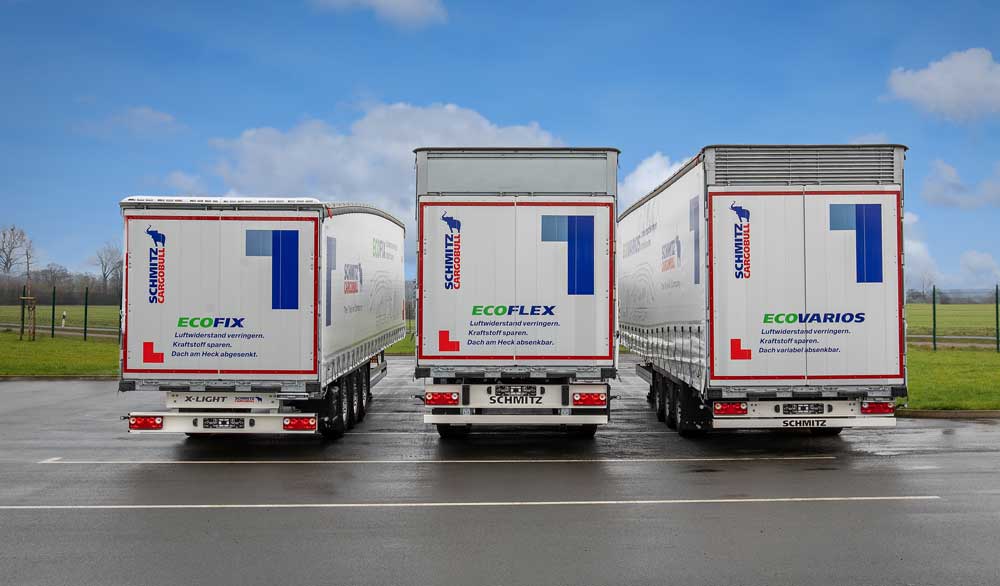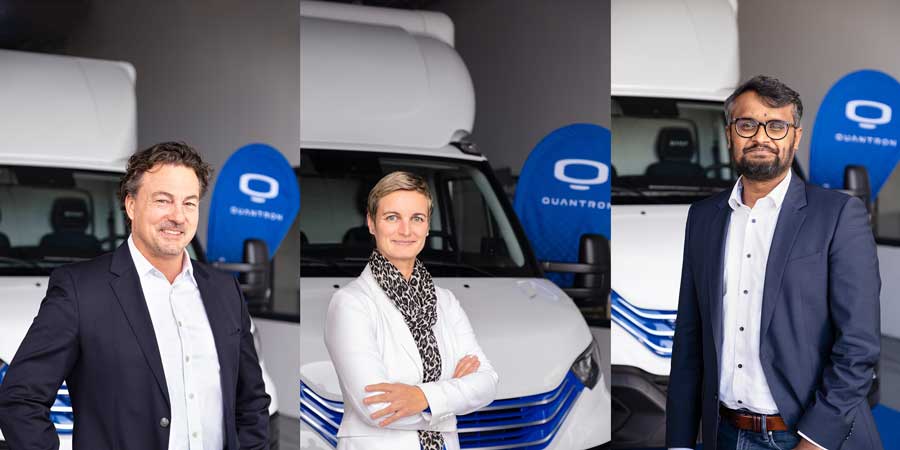Hydrogen Vehicle Systems (HVS), a UK-based hydrogen-powered commercial vehicle innovator, today reveals that the consortium it leads, Hub2Hub, has been awarded £6.6 million to develop and deliver a revolutionary, world-first, autonomous zero-emission HGV for the UK market.
Accelerating towards the next generation of transportation and logistics, the Hub2Hub consortium will create a self-driving heavy goods tractor unit, which will begin vehicles trials in 2024, with major UK retailer, ASDA, supporting on end user needs as strategic partners. It’s hoped that the cost savings an autonomous lorry could provide will speed up the adoption of zero-emissions vehicles by the freight sector, reducing the industry’s contribution to climate change.
The £12 million venture has been selected by the Centre for Connected Autonomous Vehicles (CCAV) as a recipient for its joint industry and government-funded project with the aim of showcasing the potential of autonomy in the transportation sector with unprecedented levels of efficiency, safety and operational cost savings for logistics operators, as well as providing new employment opportunities.
HVS, which laid out its plans to disrupt the haulage industry by revealing its game-changing hydrogen- electric powertrain technology demonstrator in November 2022, will receive £3.4 million as one of seven grants being announced today from the CCAV and Connected and Automated Mobility (CAM) programme.
The consortium, made up of world leaders in their fields HVS, Fusion Processing Ltd and ASDA, will build two prototype vehicles that will allow Level 4 autonomous-driving.
The first hydrogen-electric HGV prototype will be fitted with a driver’s cab and tested on the road in autonomous operation, using the Fusion Processing Ltd’s Automated Drive System, CAVStar, with a human safety driver at the wheel.
The second prototype will have the driver’s cab removed and replaced by an aerodynamic fairing. During the project this vehicle will be evaluated on test tracks, with the CAVStar system in this application allowing a remote human driver, located in a control hub, to operate the vehicle.
Together these two prototypes point to an optimised future logistics system where vehicles could be operated in autonomous mode on a hub-to-hub route, with a remote driver then taking control to drive the vehicle from the hub to its end destination.
Not only will HVS’ innovative HGV decarbonise one of the biggest polluting vehicle sectors on the road, it will expedite the development of Hub-to-Hub automated driving technology. As a UK leader in autonomous vehicles, Fusion’s collaboration in the project will see the development and integration of its advanced CAVstar system where a fusion of vision systems, AI and route planning can deliver a fully autonomous vehicle that takes over from a human driver and hands back control at pre-determined hubs on a route.
The result will help British companies seize early opportunities to develop experimental projects into scalable commercial offerings, ready for the market.

HVS CEO Jawad Khursheed commented: “A transport revolution is taking place in the UK and HVS, together with the consortium, is at the forefront of the innovation. We are engineering the world’s first autonomous hydrogen-electric powered HGV to demonstrate hub-to-hub logistics to a leading retailer, ASDA, to elevate public perception, showcasing the potential autonomy can deliver thanks to increased safety and fuel savings, and develop new business models.”
Business Secretary Grant Shapps said: “In just a few years’ time, the business of self-driving vehicles could add tens of billions to our economy and create tens of thousands of jobs across the UK. This is a massive opportunity to drive forward our priority to grow the economy, which we are determined to seize.
The support we are providing today will help our transport and technology pioneers steal a march on the global competition, by turning their bright ideas into market-ready products sooner than anyone else.”
Fusion Processing CEO Jim Hutchinson said: “Our market analysis indicates that the commercial vehicle segments such as haulage are where we will see autonomous vehicle technology first used in large scale deployments. Hub2Hub is a perfect showcase of what the advanced version of our CAVstar Automated Drive System can achieve. Combining SAE Level 4 autonomous driving with tele-operation to deliver safer and more efficient vehicle operations.”
SDA Senior Fleet Manager Sean Clifton said:“Reducing our fleet emissions is a major part of our plan of moving towards net zero, so we are keen to look at innovative new technology, such as autonomous HGV tractor units, which can make a real difference to our carbon footprint. We will continue to work with like-minded partners on projects such as this to reduce our impact on the environment.”
Autonomous, self-driving vehicles have the potential to revolutionise haulage and logistics sectors, particularly the long-haul, heavy-duty goods vehicle market.
Through the integration of ground-breaking sensor technology within the vehicle consisting of an array of radars, LIDARs, cameras, and Artificial Intelligence, it provides unprecedented operational safety without human intervention.
The application of this advanced system offers a next-generation solution to today’s shortcomings in the haulage industry, namely solving issues of driver shortages and improvement in driver quality of life, thanks to remote tele-operated vehicles. Drivers can stay local as well as take advantage of less intensive driving shifts, for a greater work-life balance.
Fleet operators can also benefit by optimising vehicle utilisation during less busy hours, thereby making logistics more efficient and more environmentally friendly by avoiding congestion. In addition, on-board advanced automated drive systems can reduce energy and tyre emissions by optimising acceleration and braking at a far greater level than human ability.
Improved operational efficiencies will help create and support new business models by providing never-before-seen freedoms of transport logistics and reductions in vehicle TCO. The automated haulage depots and hubs used for autonomous vehicle technology will also offer improved usage of space, safety and efficiency for operators.
Forecasts predict that by 2035, 40% of new UK car sales will have self-driving capabilities, with a total market value for connected and automated mobility worth £41.7 billion to the UK. This could create nearly 40,000 skilled jobs in connected and automated vehicle (CAV) technology.










